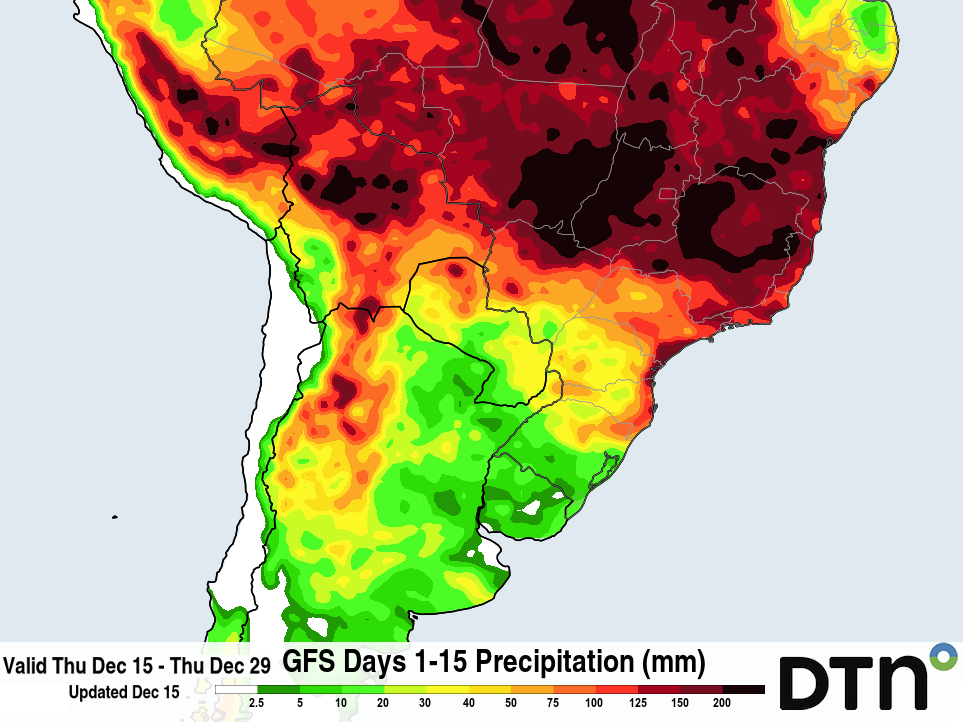South America Calling
La Nina Pattern Continues Through December for South America
It has not been a good start for Argentina's 2022-23 growing season. La Nina has certainly made its influence known. Lower temperatures in the tropical Pacific Ocean have led to heat and drought across the country and have, at times, continued that farther north into southern Brazil. Through the end of December, that pattern is not changing and crop conditions should continue to decline.
Last week it was a heatwave, this week it is just dry. Very little precipitation has fallen across Argentina or the state of Rio Grande do Sul, Brazil since a cold front came through and moved the rain out earlier this week. While some spotty showers will move through Rio Grande do Sul during the next few days, forecasts keep most of Argentina dry until another cold front moves through late next week. Through the end of December, models showcase less than 30 millimeters (1.2 inches) across the main growing areas in Argentina, and only slightly more for Rio Grande do Sul and the major production state of Parana to its north.
P[L1] D[0x0] M[300x250] OOP[F] ADUNIT[] T[]
The situation in Argentina is not critical just yet, as planting is well behind the normal pace, and most of the crop has escaped the terrible conditions. According to the Buenos Aires Grain Exchange, soybeans are 50% planted and just 28% emerged as of Dec. 15. For corn, the crop is just 43% planted and 26% emerged. The crop that has broken has not done so in good condition, but there is still a long season to go.
In southern Brazil, the crop is much further along and starting to feel the effects. Corn, in particular, has a harder time as more of that crop is entering pollination. Conab recently lowered its estimated production of the first corn crop due to dryness in Rio Grande do Sul. The season here is a bit shorter on time.
The only problem is conditions do not look to get any better, at least not in the short term. The longer that producers in Argentina wait for more favorable growing conditions to plant, the more sunlight they miss out on. The solstice is fast approaching and the region will start to lose sunlight by the end of the month. It would be the equivalent of waiting until after June 15 to start planting corn and soybeans, and producers and estimators would suggest that yields would fall each day that a crop is not planted. There may not be good enough conditions with which to do so, however.
Instead, producers may continue to wait. Typically, the end of planting is completed mid-late January. The region will be looking at the waning La Nina to finally loosen its grip on the clouds and let the moisture in. Rio Grande do Sul needs the rain quickly to avert damage to crops.
Most long-range model outlooks point to dryness continuing through March, however, which is not a good sign no matter when the Argentina crop is planted.
John Baranick can be reached at john.baranick@dtn.com
(c) Copyright 2022 DTN, LLC. All rights reserved.




